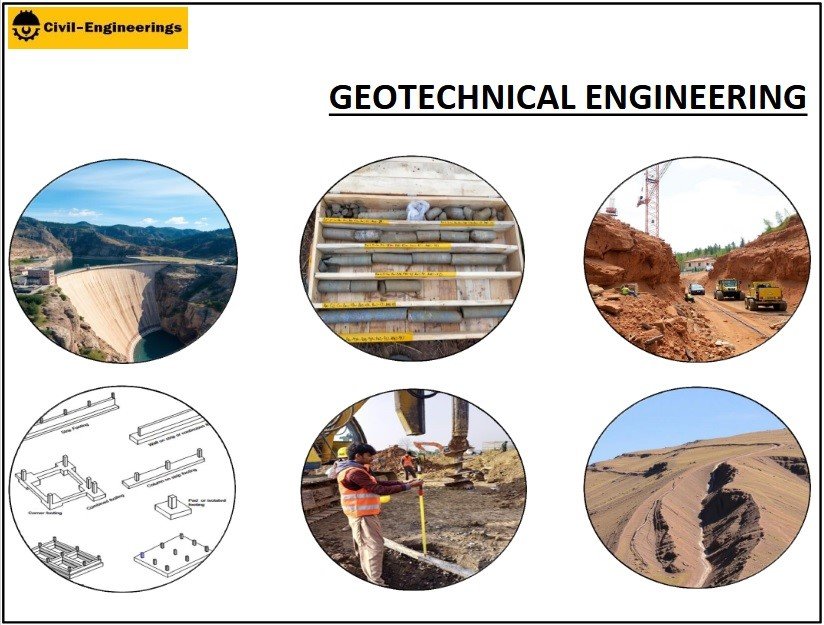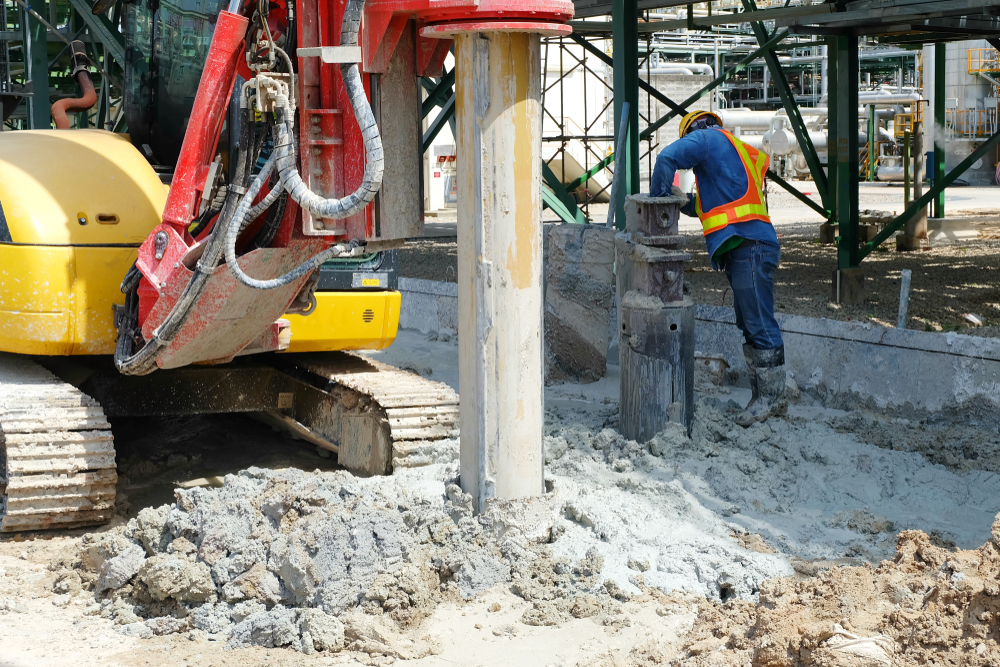Geotechnical Engineering For Construction Projects - Truths
Geotechnical Engineering For Construction Projects Things To Know Before You Buy
Table of ContentsThe Ultimate Guide To Geotechnical Engineering For Construction ProjectsTop Guidelines Of Geotechnical Engineering For Construction ProjectsGeotechnical Engineering For Construction Projects for DummiesUnknown Facts About Geotechnical Engineering For Construction ProjectsUnknown Facts About Geotechnical Engineering For Construction ProjectsThe 25-Second Trick For Geotechnical Engineering For Construction ProjectsNot known Incorrect Statements About Geotechnical Engineering For Construction Projects
and Kovacs, W. (1981 ), An Introduction to Geotechnical Design, Prentice-Hall, Inc. Deep Scan Tech (2023 ): Deep Check Technology uncovers hidden structures at the website of Denmark's tallest structure. "Geofrost Coring". GEOFROST. Obtained 20 November 2020. Han, Jie (2015 ). Concepts and Method of Ground Improvement. Wiley. ISBN 9781118421307. RAJU, V. R.Ground Enhancement Technologies and Situation Histories. Singapore: Research Publishing Services. p. 809. ISBN978-981-08-3124-0. Ground Enhancement Concepts And Applications In Asia. Pariseau, William G. (2011 ). Style evaluation in rock auto mechanics. CRC Press. Hegde, A.M. and Palsule P (Geotechnical Engineering for Construction Projects).S. (2020 ), Performance of Geosynthetics Reinforced Subgrade Subjected to Repeated Lorry Plenties: Experimental and Numerical Researches.
Cengage Understanding, Stamford, 666 p. Atkinson, J., 2007. The mechanics of dirts and structures. Taylor & Francis, N.Y., 442 p. Drifting Offshore Wind Turbines: Reactions in a Sea state Pareto Ideal Styles and Financial Evaluation, P. Sclavounos et al., October 2007. Nicholson, D, Tse, C and Cent, C. (1999 ). The Observational Technique in ground design concepts and applications.
Indicators on Geotechnical Engineering For Construction Projects You Need To Know
Lab and field screening plays an essential function in this procedure. By drawing out examples from the planet's subsurface and applying a collection of tests, geotechnical designers can forecast the practices of soil layers and evaluate their viability for different building and construction efforts. The significance of geotechnical engineering in civil engineering can not be overemphasized, attributable to several factors: The initial action in any geotechnical research involves determining the dirt kind at the construction site.
The structure acts as the bedrock of any construction job. Selecting the appropriate foundation type is a decision that hinges on the detailed analysis supplied by geotechnical engineering.

Geotechnical website examination is an essential action in the planning and execution of any construction project. It involves the collection and evaluation of data related to the physical buildings of dirt and rock underneath a recommended building website. This info is important for the design and construction of safe, stable, and sustainable frameworks.
Get This Report about Geotechnical Engineering For Construction Projects
In this blog site, we will delve right into the significance of geotechnical website investigation, its various elements, and just how it profits construction tasks. Geotechnical website examination, additionally referred to as subsurface expedition, involves a collection of activities targeted at identifying the dirt, rock, and groundwater conditions at a construction site. The key purposes are to recognize potential geotechnical threats, evaluate the design buildings of subsurface materials, and give recommendations for the layout and construction of foundations, preserving walls, and various other frameworks.
The workdesk research assists in recognizing possible geotechnical concerns and preparing the subsequent fieldwork. This entails observing the topography, water drainage patterns, existing structures, plant life, and any type of signs of instability or erosion.
Geotechnical Engineering For Construction Projects Things To Know Before You Get This
Shallow examination pits are excavated to directly observe and sample the soil and rock. This technique serves for examining the top layers of the subsurface and recognizing near-surface hazards. Non-invasive geophysical approaches, such as seismic refraction, ground-penetrating radar (GPR), and electrical resistivity tomography (ERT), are used to map subsurface problems and spot abnormalities.
Soil and rock examples accumulated throughout the field investigation go through lab testing to identify their physical and mechanical residential or commercial properties. Usual lab tests include grain dimension evaluation, Atterberg limitations, compaction tests, triaxial shear examinations, and loan consolidation examinations. These tests offer important information for geotechnical evaluation and style. The information collected from the desk research, website reconnaissance, area investigation, and research laboratory testing are examined and interpreted to create an extensive understanding of the subsurface conditions.
The key advantage of geotechnical website investigation is ensuring the safety and stability of structures. By understanding the subsurface problems, designers can create structures and other structural components that can endure the tons and environmental pressures they will certainly be subjected to. This lessens the Related Site danger of settlement, decrease, and architectural failure.
Some Known Factual Statements About Geotechnical Engineering For Construction Projects
This makes certain reliable and secure building methods. Geotechnical website investigations are commonly required by building codes and laws.
This details is very useful for task managers, engineers, and specialists in developing sensible schedules, budget plans, and backup strategies. Geotechnical Engineering for Construction Projects. Skyscraper in a Coastal AreaIn a seaside city, a skyscraper residential building was intended on a site with presumed loosened sand down payments and a high water table. A comprehensive geotechnical examination, consisting of borehole drilling, CPT, and geophysical surveys, was performed
Some Known Incorrect Statements About Geotechnical Engineering For Construction Projects
Based on these findings, the foundation layout was changed to consist of deep stack structures prolonging into stable strata, and ground improvement methods, such as vibro-compaction, were carried out to reduce liquefaction risks. This proactive strategy ensured the safety and security of the building while avoiding pricey post-construction removal. Facilities Advancement on a Sloping TerrainA major framework job, involving the building and construction of a freeway and bridges, was intended on an uneven terrain with steep slopes.

The Leaning Tower of Pisa (Italy), an iconic building wonder, is notorious for its unplanned tilt from significant geotechnical concerns. The tower's foundation was improperly made to manage the soft, unstable soil underneath it, leading to irregular settlement and its unique lean. Our world is populated with excellent infrastructure projectsfrom towering high-rises to sprawling bridgesall standing statement to the development of the various building devices and techniques readily available.
Geotechnical engineering is a customized field within civil engineering that concentrates on studying the habits of planet products. This branch digs deep right into the groundinvestigating how the soil, rock, and groundwater at a building website can influenceand be click here for more influenced bythe infrastructure that we put up on and right into them. Prior to a single this content block is laid or a concrete foundation put, geotechnical designers probe into the earthgathering crucial data regarding the site's dirt structure, rock framework, and groundwater levels.
The Geotechnical Engineering For Construction Projects Ideas

is a tool utilized to examine the stability and load-bearing capacity of heaps throughout installation, leveraging the principle of wave proliferation. It enhances construction efficiency by giving real-time examinations, hence guaranteeing secure and reliable heap foundations. One of the functional applications of geotechnical engineering includes making a decision and implementing the appropriate techniques for foundation construction.
Load driving stands for more than the plain act of inserting structural components into the ground. On the contrary, it is a meticulously coordinated process of transferring a structure's tons past the much less steady soil layers closer to the surfacedown to the a lot more considerable strata that lie below. When it comes to pile driving, consider how geotechnical engineers skillfully utilize this technique to evenly distribute the structure's weight.